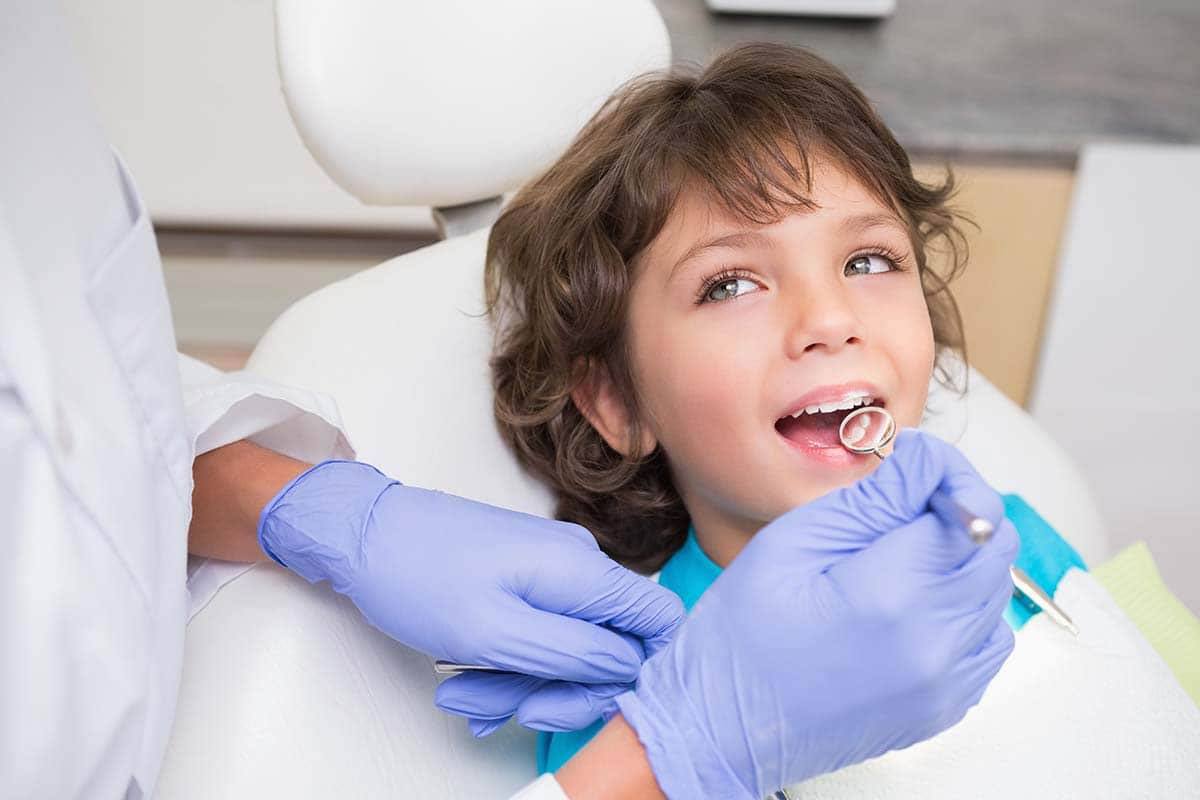A 2025 Parent’s Guide to Pediatric Dentists and Cutting-Edge Pediatric Dental Care
First visit by age one, fluoride toothpaste the size of a grain of rice, drill-free cavity arrest, and teledentistry follow-ups—pediatric dental care has evolved fast. This guide unpacks the latest science and practical tips so you know exactly how, when, and why to partner with a pediatric dentist to keep every tiny smile healthy from cradle to college.

1. Why a Pediatric Dentist?
Pediatric dentists complete two to three additional years of child-focused residency after dental school. Training covers growth and development, child psychology, minimally invasive techniques, and care for children with special health-care needs. Their offices are also purpose-built—shorter chairs, smaller instruments, child-friendly décor, and staff trained in behavioral guidance—all of which cut appointment times and anxiety.
2. The “Dental Home” Timeline
| Child's Age | Key Oral Milestones | Recommended Professional Care | Home-Care Focus |
|---|---|---|---|
| 0–6 months | Gums only | Expectant-parent counseling | Wipe gums daily |
| 6–12 months | First tooth erupts | Establish dental home by age 1 | Grain-of-rice fluoride paste twice daily |
| 1–3 years | Full primary set | Twice-yearly exams, varnish | Limit sippy-cup sugars |
| 3–6 years | Jaw growth spurt | Sealants on molars, risk assessment | Pea-sized fluoride paste; flossing help |
| 6–12 years | Mixed dentition | Orthodontic screening, SDF or sealants | Sports mouthguard, snack timing |
| 12+ years | All permanent teeth | Wisdom-tooth monitoring, mouthguards | Independence with brushing & diet |
3. Fluoride: Small Doses, Big Protection
Fluoride toothpaste should be used as soon as the first tooth appears. For children under 3, use a smear (the size of a grain of rice). From ages 3 to 6, a pea-sized amount is appropriate. Brush twice daily under adult supervision. In high-risk cases, a dentist may recommend additional treatments such as fluoride varnish or prescription-strength rinses.
4. Silver Diamine Fluoride (SDF): Stopping Cavities Without a Drill
SDF is a liquid applied to early cavities to stop decay by killing bacteria and hardening the affected area. It is non-invasive, painless, and ideal for young or anxious children. The only drawback is that it turns the decayed area a dark gray color—parents should be informed before choosing this option.
5. Behavior Guidance: Anxiety-Free Appointments
Modern pediatric dental offices use a range of techniques to reduce anxiety:
Tell-Show-Do: Explain, demonstrate, then perform.
Distraction & VR: Use of cartoons or virtual reality goggles.
Nitrous Oxide: Mild sedation when necessary.
Parental Presence: Younger children may sit on a parent's lap, while older kids may prefer independence.
6. Nutrition & Cavity Risk: Frequency vs. Quantity
Cavities are often linked more to how often a child eats than how much sugar is consumed. Snacking frequently increases acid attacks on teeth. Encourage water with snacks, finish meals with cheese or crunchy fruits, and limit sports drinks to occasional use.
7. Teledentistry & Remote Monitoring
Some pediatric practices now offer virtual check-ins using smartphone-friendly intraoral cameras. Parents can send images of their child's mouth for remote evaluation—helpful for post-op care or monitoring tooth development, especially in rural or underserved areas.
8. Choosing Your Child's Dental Team
When selecting a pediatric dentist, consider:
Training: Board certification in pediatric dentistry.
Safety: Clear sedation and emergency protocols.
Preventive Care: Availability of SDF, sealants, dietary guidance.
Communication: Age-appropriate, inclusive explanations.
Convenience: Evening hours, online booking, and access to orthodontics.
9. Setting Up for Lifelong Oral Health
Early dental habits shape long-term outcomes. Consistent brushing, good dietary choices, and regular check-ups reduce the risk of future problems. Lead by example—children who see parents prioritizing dental health are more likely to do the same.
Key Takeaways
Schedule the first dental visit by age 1.
Use fluoride correctly—smear size under age 3, pea-size from 3 to 6.
Consider SDF for painless cavity treatment.
Reduce snacking frequency, not just sugar quantity.
Explore teledentistry and behavior-guided visits to make dental care easier.
Related Articles
Family Dentistry Demystified: A Complete Guide to Family Dental Care for All Ages
Explore how family dentistry ensures healthy smiles at every age with comprehensive care, convenience, and preventive focus.
Choosing the Right Children's Dentist Near You: What Every Parent Needs to Know
Discover how to find the best children's dentist near you, with expert tips to ensure your child’s dental visits are stress-free and effective.